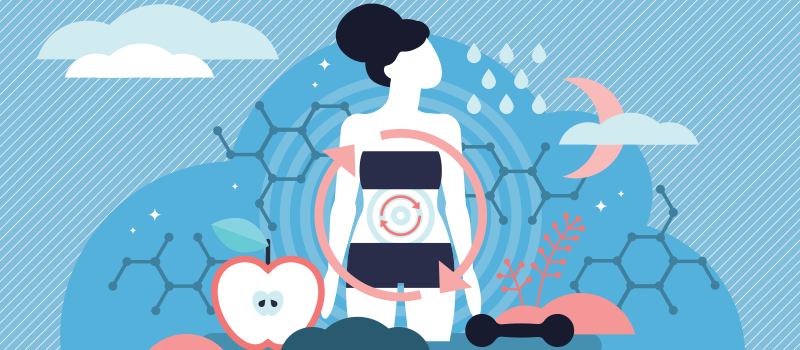What’s the Buzz
The Bee Healthy Blog
Which Statin Has the Least Amount of Side Effects?

Key Takeaways
-
Studies have shown that simvastatin and pravastatin seem to have the fewest side effects and are better tolerated than the other statins. Patients with mild liver enzyme abnormalities can take a low-dose statin like atorvastatin.
-
Atorvastatin, simvastatin, and fluvastatin are more likely to cause muscle aches, while hydrophilic statins like pravastatin and rosuvastatin are less likely to cause muscle aches.
-
If you are on other medications to lower cholesterol, over the age of 80, female, have a smaller body, have kidney liver disease, drink excessive alcohol, or have certain medical conditions, you are at higher risk of statin side effects.
Statins, or HMG-CoA reductase inhibitors, are widely prescribed drugs used to lower cholesterol levels, reducing the risk of cardiovascular diseases like heart attack and stroke. While statins are the most commonly prescribed cholesterol-lowering drugs, they can cause side effects just like all medications.
Continue reading to learn about the few serious side effects of taking statin medications, tips on minimizing them, and which statins are less likely to cause side effects.
Why lowering cholesterol is important for heart disease
High cholesterol is a well-known risk factor for heart disease and stroke. Other risk factors include smoking, an unhealthy diet, lack of physical activity, obesity, high blood pressure, diabetes, and familial hypercholesterolemia, among others.
Too much cholesterol in the blood increases the risk of heart attack and stroke. In people with high cholesterol, the cholesterol builds up in the walls of the blood vessels, causing them to become narrow. This process is called atherosclerosis. When the arteries become narrow, blood flow to the heart muscle is reduced or blocked. This cardiovascular event is called a heart attack.
What are HDL and LDL cholesterol?
Cholesterol is a waxy substance made by the liver; it is essential for healthy cells and organs. You also get it from certain foods that contain saturated fat. Foods with high saturated fat cause the liver to make more cholesterol. This can lead to high cholesterol levels in the blood, which, as noted above, is a risk factor for cardiovascular disease.
There are two main types of cholesterol. Low-density lipoprotein (LDL) is called "bad" cholesterol. High-density lipoprotein (HDL) cholesterol is called "good" cholesterol. Another type of lipid (fat) found in the blood is called triglycerides.
Too little HDL cholesterol or too much LDL cholesterol, triglycerides, and total cholesterol in the blood increases the risk of heart disease, stroke, and other serious health problems. Doctors can do a cholesterol test (also called a lipid panel or lipid profile) to check your cholesterol levels.
How do statins reduce the risk of cardiovascular disease?
If you have high cholesterol levels on your blood tests, your doctor may prescribe statins to lower your cholesterol. The treatment can help to reduce your stroke and heart disease risk and improve your cardiovascular health.
Statins work by blocking a substance that the liver needs to make cholesterol. This leads to the reduction of the cholesterol amount in the blood, thus reducing the risk of cardiac events.
Examples of statins include simvastatin (Zocor®), atorvastatin (Lipitor®), pravastatin (Pravachol®), rosuvastatin (Crestor®), fluvastatin (Lescol®), lovastatin (Altoprev®), and pitavastatin (Livalo®).
While these drugs are highly effective and safe for most people, they can cause side effects.
What are the common side effects of statin therapy?
Muscle aches
Muscle pain is one of the most common side effects in people taking statins. It can present as tiredness, soreness, or weakness in the muscles. It can range from a mild ache or discomfort to severe pain that makes it difficult to do daily activities.
Around 5% of people develop muscle pain on statins. Interestingly, studies have shown that nearly 30% of people stop taking the medicine because of muscle aches, even when taking a placebo (dummy pill). This is called the "nocebo" effect (negative expectations and perceived muscle pain leading to statin intolerance). In other words, you might be at higher risk of experiencing muscle pain on statins if you have read about this potential side effect.
Muscle damage
Very rarely, statin treatment can cause a life-threatening condition called rhabdomyolysis. This is a severe muscle inflammation along with kidney and liver damage that can potentially cause death. However, the risk of it occurring is low. Rhabdomyolysis is more likely when a person takes high doses of statins or statins in combination with certain other drugs.
Liver damage
Occasionally, patients taking statins can develop liver inflammation and liver enzyme abnormalities. If this is mild, you can continue to take a statin. However, if the enzyme abnormalities are severe or progress, you may need to change to a different statin drug.
Your doctor may order liver function tests before starting you on a statin for cholesterol management to obtain your baseline liver function. You should get in touch with your doctor immediately if you develop signs and symptoms of liver damage while on statin treatment. These symptoms include fatigue, weakness, loss of appetite, upper abdominal pain, yellowing of the skin or eyes, and dark-colored urine.
Increased risk of type 2 diabetes
The Food and Drug Administration (FDA) has issued a warning that statin medications can increase blood glucose (blood sugar) levels, which can lead to the development of type 2 diabetes. The risk is higher in people who already have prediabetes or diabetes when starting a statin.
Neurological side effects
Some people can develop confusion and memory problems while taking statins. These side effects usually disappear upon stopping the medication. The evidence linking statins to neurological adverse effects is not substantial. In fact, there is even some evidence that statins may improve brain function in people with dementia.
Who is at risk of statin side effects?
Most people can tolerate statins without major side effects. However, some people are at higher risk of side effects from statin use than others. This includes people who:
-
Are on other medications to lower cholesterol
-
Are over the age of 80
-
Are female
-
Have a smaller body frame
-
Have kidney disease or liver disease
-
Drink excessive alcohol
-
Have certain medical conditions like hypothyroidism or amyotrophic lateral sclerosis (ALS)
It has also been discovered that grapefruit juice can interfere with statin metabolism. It may not be necessary to eliminate grapefruit completely from your diet but keep in mind that grapefruit juice affects certain statins more than others. Talk to your doctor or pharmacist about how much grapefruit is safe when using statins or which statin is less likely to interact with grapefruit juice.
Drug interactions can increase the risk of statin side effects. Statins can interact with certain medications used to treat heart rhythm abnormalities, gemfibrozil (Lopid), certain HIV medications, some antibiotics, some antifungal drugs, and certain immunosuppressant drugs.
Which cholesterol-lowering drug is the safest?
Studies have shown simvastatin and pravastatin to be safer and better tolerated than the other statins. Statins having adverse events are rare and are low-risk medications.
Which statin is safest for the liver?
A low-dose statin like atorvastatin is safe for most patients, including those with mild liver enzyme abnormalities. Many people have fatty liver disease due to obesity. Losing weight can help to correct the liver enzyme tests.
The safety of statins in patients with moderate to severe liver disease is not proven. It is important to check liver function tests periodically as directed by your doctor so that statin therapy can be stopped if the tests are increasingly abnormal.
Which statin is less likely to cause muscle pain?
Atorvastatin, simvastatin, and fluvastatin are more likely to cause muscle aches as they are lipophilic, meaning they diffuse passively into the muscles.
On the other hand, hydrophilic statins like pravastatin and rosuvastatin need to be actively transported to the muscles. Therefore, they cause fewer muscle aches.
If you are experiencing muscle aches on statins, talk to your doctor to see if a hydrophilic statin is a more suitable choice for you.
How to relieve statin side effects?
If you have side effects and believe they are caused by a statin, talk to your doctor about the following measures:
Take a short break from statin therapy. This might help to figure out if it is the statin causing the side effect or something else.
Change to another statin drug. Sometimes, switching to other statins can relieve side effects.
Change your medication dosage. High doses are more likely to cause side effects. Lower doses of a statin may reduce some of the side effects. However, lower statin levels will also reduce the cholesterol-lowering benefits of the drug.
Go easy during exercise. Sudden vigorous exercise increases the risk of muscle injury. You should make gradual changes to your exercise program.
Consider other cholesterol drugs. Statins are the most effective oral medications for lowering cholesterol. However, there are other cholesterol-lowering medications available. Talk to your doctor or pharmacist about other non-statin cholesterol-lowering therapy.
Try CoQ10 supplements. Coenzyme Q10 supplements can help reduce statin side effects in some people, although there is no solid scientific evidence to support this.
The Takeaway
Generally, the health benefits of taking a statin medication outweigh the potential side effects of these drugs. Most statins are well tolerated by the majority of people. If you are experiencing uncomfortable, persistent side effects from a statin medication, don’t stop taking the pills before you talk to your doctor. A healthcare professional can provide medical advice and may come up with an alternative treatment plan that will help in lowering LDL cholesterol and cardiovascular risk with fewer side effects.
Save on Your Cholesterol-Lowering Medications with BuzzRx!
Manage your PCT medication costs with BuzzRx coupons. Here are direct links to substantial savings for each medication:
-
Simvastatin Coupon: The retail price is about $106.29, but with BuzzRx, you might pay as low as $6.78.
-
Atorvastatin Calcium Coupon: Typical retail prices range between $61.17 and $339.24, and with BuzzRx coupons, you could pay as low as $15.81.
-
Pravastatin Sodium Coupon: Save with BuzzRx coupons, with prices as low as $17.90.
-
Rosuvastatin Calcium Coupon: The usual prices vary greatly, from around $293.99 to $629.99, but with BuzzRx coupons, pay as low as $13.46.
-
Fluvastatin Sodium Coupon: The retail price is $661.69. With BuzzRx coupons, pay as low as $379.36.
-
Lovastatin Coupon: The usual price is around $81.28. With BuzzRx coupons, pay as little as $11.08.
-
Pitavastatin Calcium Coupon: Typical retail prices are around $1,034.99, but with BuzzRx coupons, pay as little as $728.87.
-
Gemfibrozil Coupon: With normal prices around $111.03, you can use your BuzzRx coupon to pay as little as $21.39.
Remember, these coupons are widely accepted at over 60,000 pharmacies, including major chains like CVS, Walgreens, and Rite Aid. Just present your coupon at the pharmacy to ensure you're getting the best possible price.
References:












SOCIAL